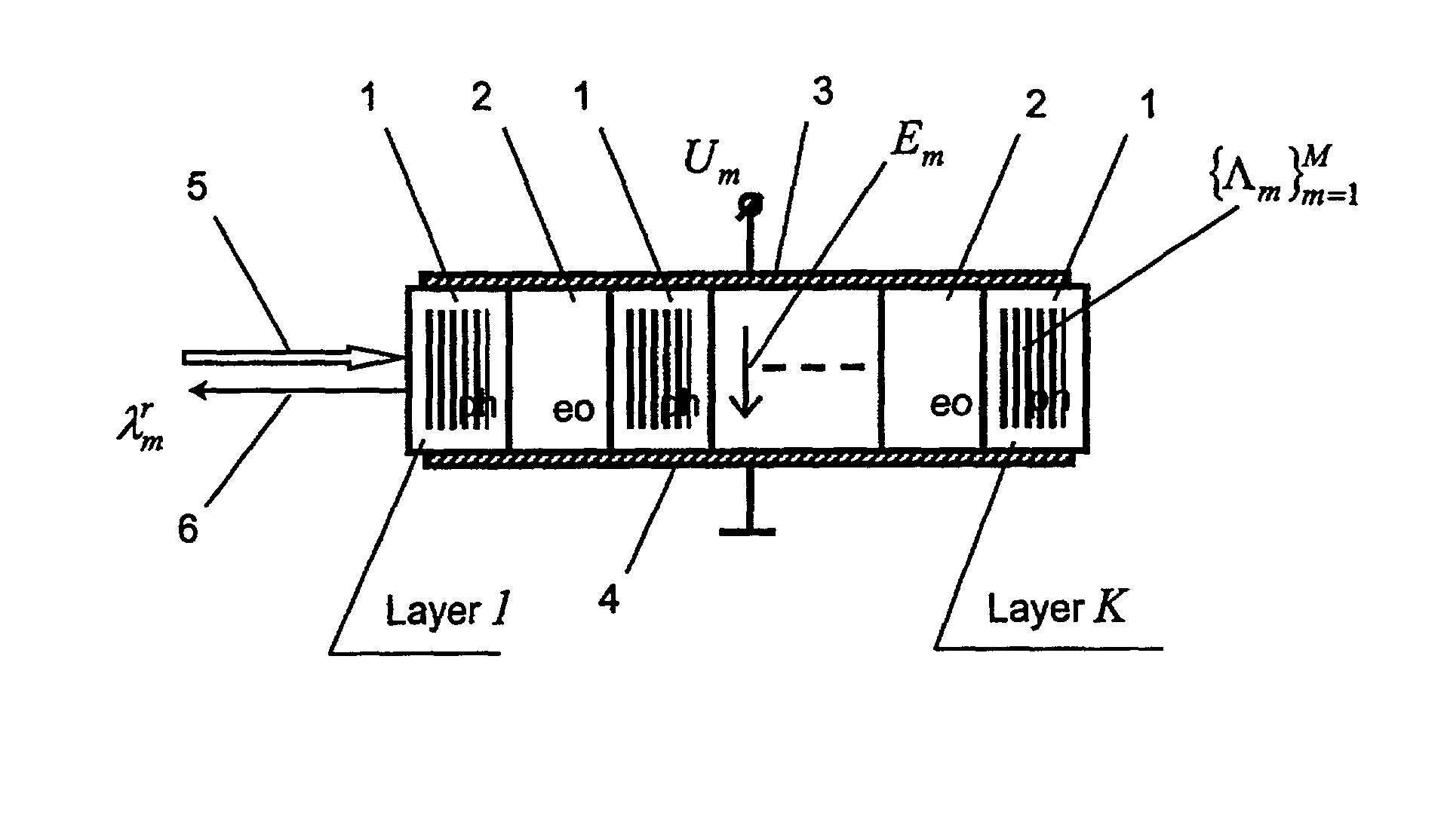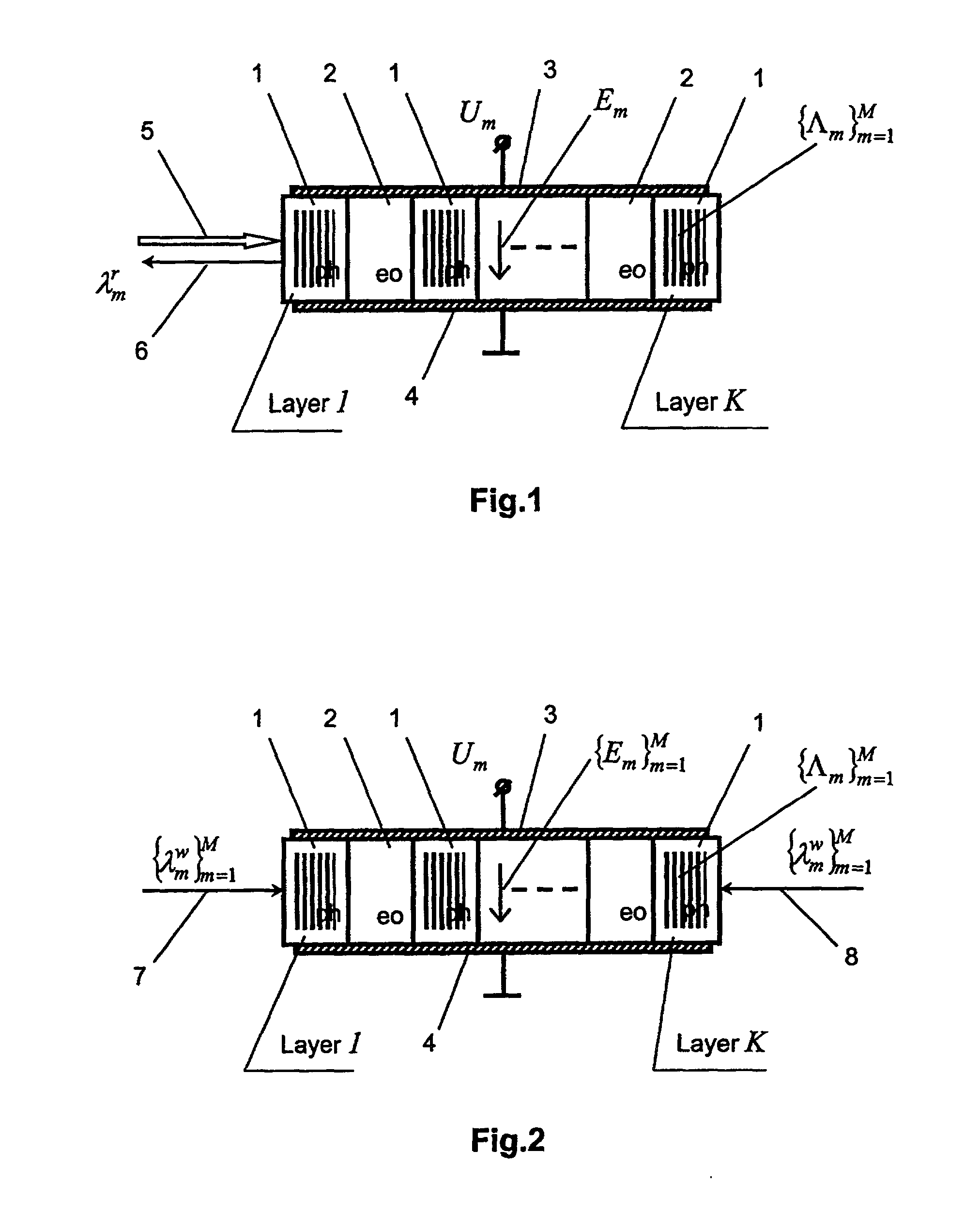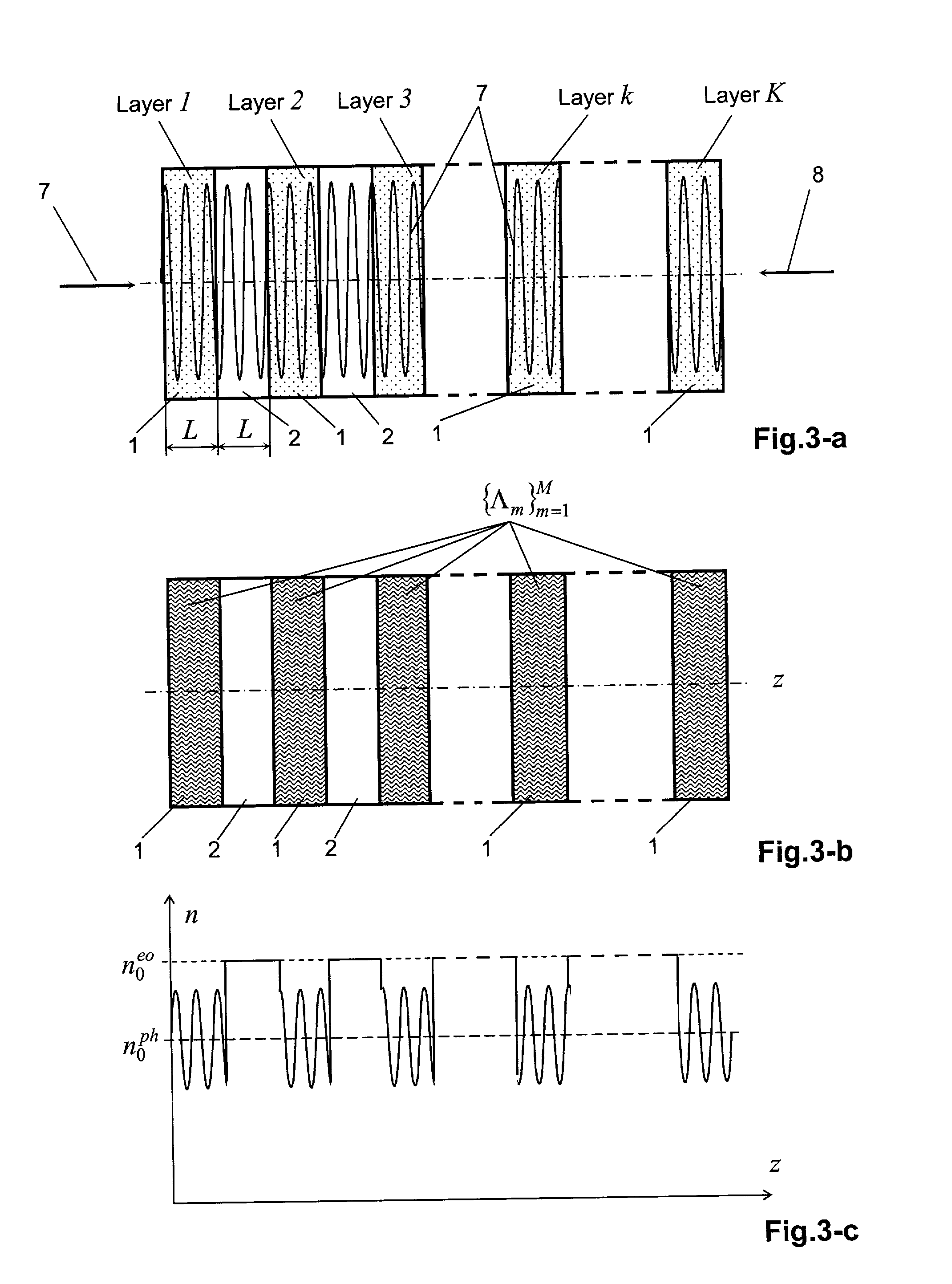Spectral filtration of optical radiation
- Summary
- Abstract
- Description
- Claims
- Application Information
AI Technical Summary
Benefits of technology
Problems solved by technology
Method used
Image
Examples
Embodiment Construction
[0026] The filter of the present invention shown in FIG. 1 comprises layers 1 of a photosensitive material (ph) used to record volume phase holographic gratings and layers 2 of an electrooptic material (eo) whose index of refraction can vary depending on the strength of the applied external electric field. All the layers 1 and 2 form a multilayered structure with an optical contact between the layers, the layers 2 of the electrooptic material being interposed between the layers 1 of the photosensitive material, the total number of the photosensitive material layers being K. The total amount of gratings recorded in the filter is M, M.ltoreq.K. The m-th holographic grating has period .LAMBDA..sub.m, where m is the number of the grating. In each layer 1 of the photosensitive material the parts of all the gratings are recorded. The m-th holographic grating is recorded in the presence of a specified electric field E.sub.m, which is produced in the layers 2 of the electrooptic material wi...
PUM
 Login to View More
Login to View More Abstract
Description
Claims
Application Information
 Login to View More
Login to View More - R&D
- Intellectual Property
- Life Sciences
- Materials
- Tech Scout
- Unparalleled Data Quality
- Higher Quality Content
- 60% Fewer Hallucinations
Browse by: Latest US Patents, China's latest patents, Technical Efficacy Thesaurus, Application Domain, Technology Topic, Popular Technical Reports.
© 2025 PatSnap. All rights reserved.Legal|Privacy policy|Modern Slavery Act Transparency Statement|Sitemap|About US| Contact US: help@patsnap.com



